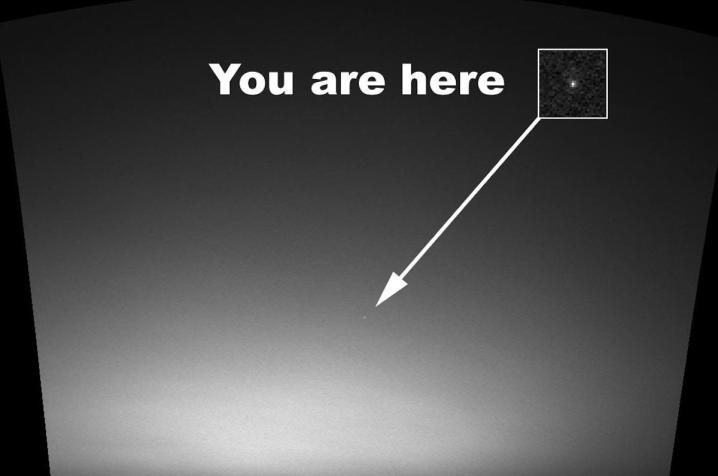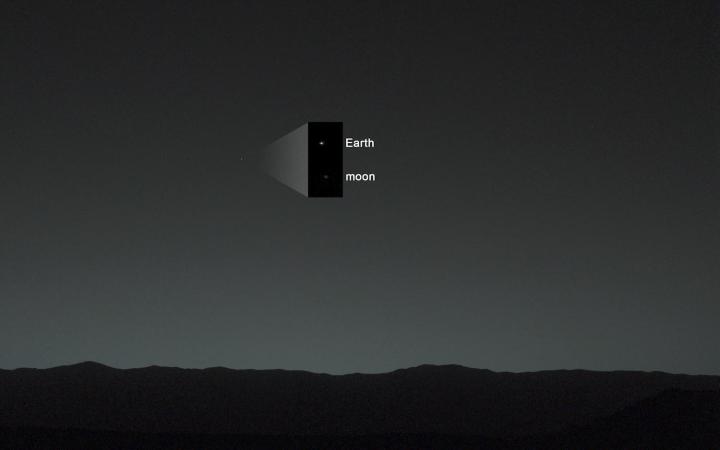
Twenty years ago, on March 8, a NASA Mars rover made history when it captured the first image of Earth from the surface of another planet.
The rover, Spirit, landed on the martian surface on January 2004. Soon after landing in Mars’ Gusev Crater, Spirit wasted little time in beaming back images of its new surroundings. A couple of months later, it snapped a mind-blowing image (above) offering a view of Earth that was as fresh as it was astonishing.
“Shortly before sunrise [on March 8], Spirit’s camera managed to capture Earth as a bright star, appearing much as Venus does to terrestrial observers. This marked the first photograph of Earth from another planetary surface,” NASA said in an article on its website this week.
It was nearly another 10 years before another NASA rover, Curiosity, came along and captured its own image (below) of Earth, this one from inside Mars’ Gale Crater. Curiosity’s picture is remarkable for the fact that it also shows Earth’s moon despite being taken from 99 million miles (159 million kilometers) away.

“These images — and others taken of Earth from ever-more distant vantage points over the past eight decades — provided a new perspective of our home planet’s place in our solar system,” NASA said.
Spirit explored the martian surface for almost another six years, with the last contact from the rover coming on March 22, 2010. Curiosity, meanwhile, continues its work in Gale Crater until this day, and another rover, Perseverance — NASA’s most advanced to date — has been exploring Jezero Crater since arriving there in spectacular style in February 2021.
In December 1968, another iconic Earth image was captured not by a rover but by retired astronaut Bill Anders during the Apollo 8 lunar mission in December 1968. In recent years, astronauts aboard the International Space Station have also been snapping sublime images of our planet from 250 miles up.
Editors’ Recommendations

